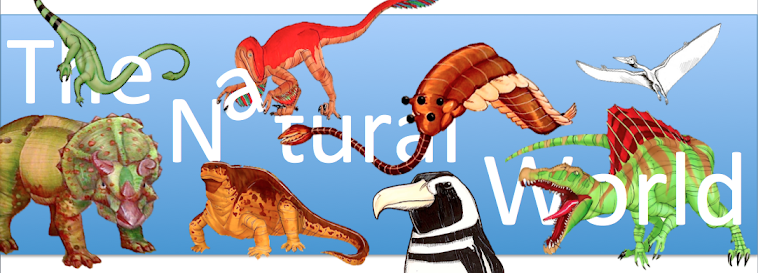Many different types of animals have horns. Let's take a look at a few of these creatures.
The members of the family "Giraffidae," which includes the giraffe and the okapi, both have horn-like things on their heads, called "ossicones."
The members of the family "Rhinocerotidae," or the rhinos, have horns that are composed solely of keratin, and do not have the bone core typical of many horns. The horns of the rhinos also grow continuously.
Some of the members of the family "Chamaeleonidae," or the chameleons, often have horns projecting out of their skulls, which are covered in a layer of keratin.
And, of course, the members of the family "Ceratopsidae," a group of marginocephalian dinosaurs, have horns projecting out of their skulls.
Below is a short list of some of the more famous Ceratopsian dinosaurs.
Famous examples of Ceratopsian Dinosaurs (or "Ceratopsians That I Have Heard Of):
- Triceratops - (Colorado, Montana, and Wyoming, U.S.; Alberta and Saskatchewan, Canada)
- Arrhincoceratops - (Alberta, Canada)
- Torosaurus - (Montana, North Dakota, South Dakota, Utah, and Wyoming, U.S.; Saskatchewan, Canada)
- Monoclonius - (Montana, U.S.; Alberta, Canada)
- Chasmosaurus - (Alberta, Canada)
- Centrosaurus - (Alberta, Canada)
- Styracosaurus - (Montana, U.S.; Alberta, Canada)
- Achelousaurus - (Montana, U.S.)
- Pentaceratops - (New Mexico, U.S.)
- Vagaceratops - (Alberta, Canada)
- Diabloceratops - (Utah, U.S.)
- Albertaceratops - (Montana, U.S.; Alberta, Canada)
- Einiosaurus - (Montana, U.S.)
- Anchiceratops - (Alberta, Canada)
- Mojoceratops - (Alberta and Saskatchewan, Canada)
- Pachyrhinosaurus - (Alaska, U.S.; Alberta, Canada)
- Kosmoceratops - (Utah, U.S.)
- Medusaceratops (Montana, U.S.)
- Utahceratops - (Utah, U.S.)

No comments:
Post a Comment